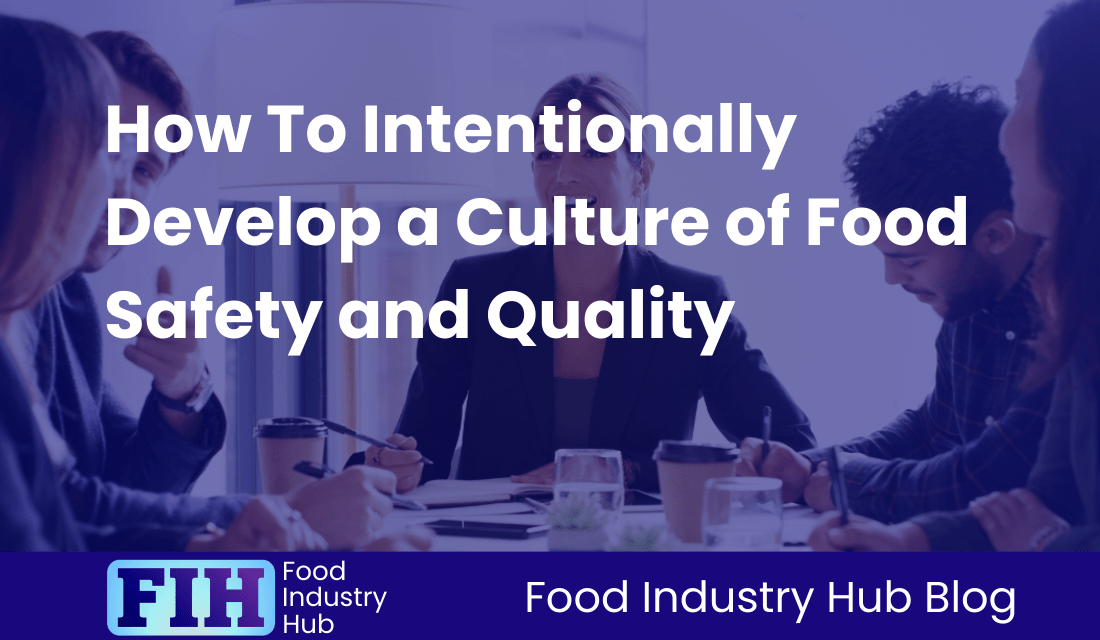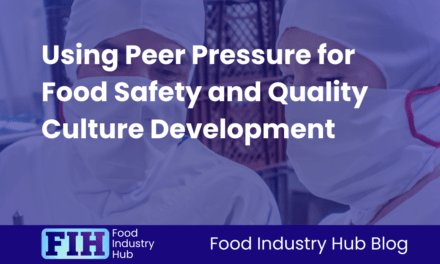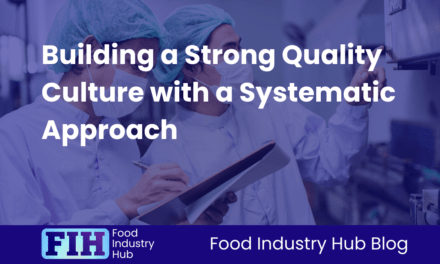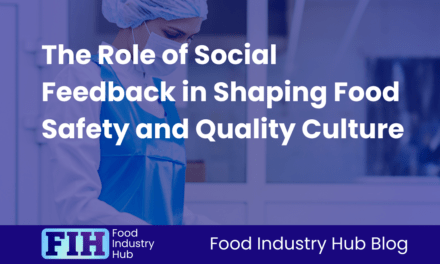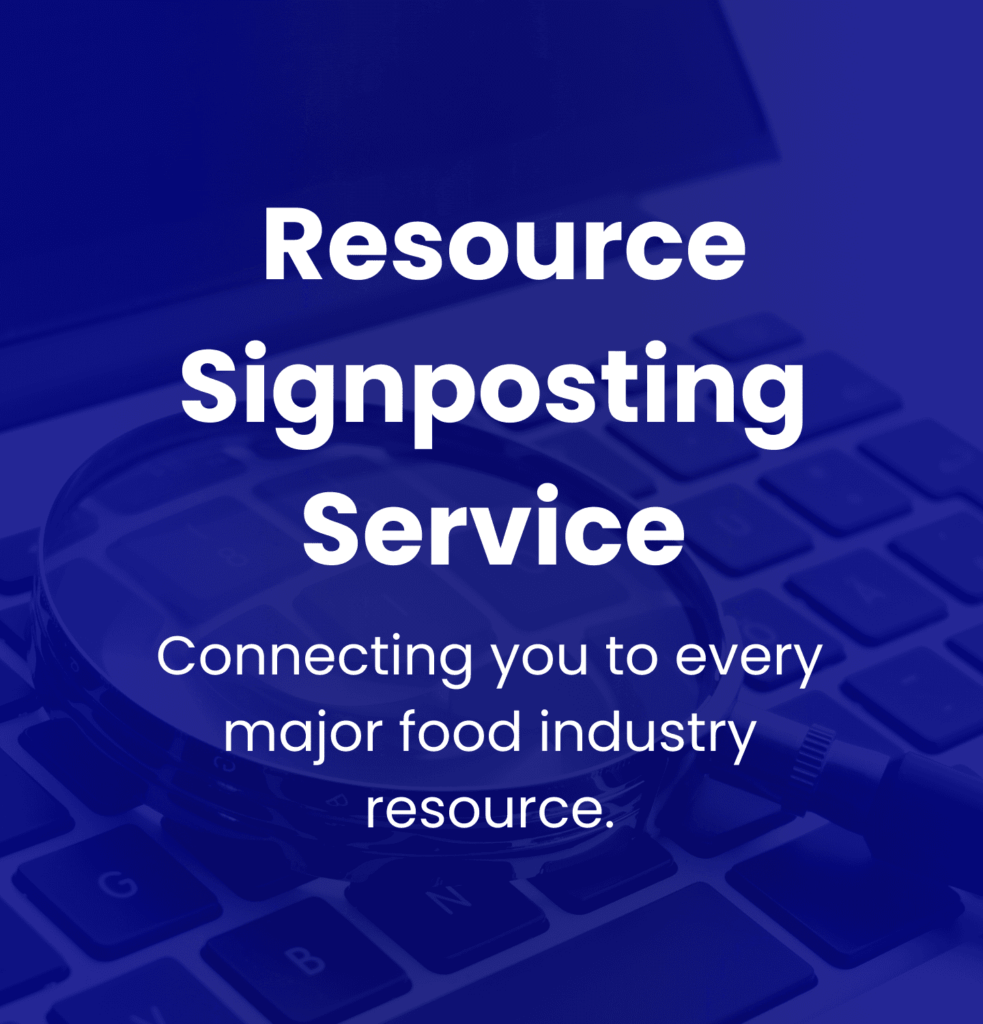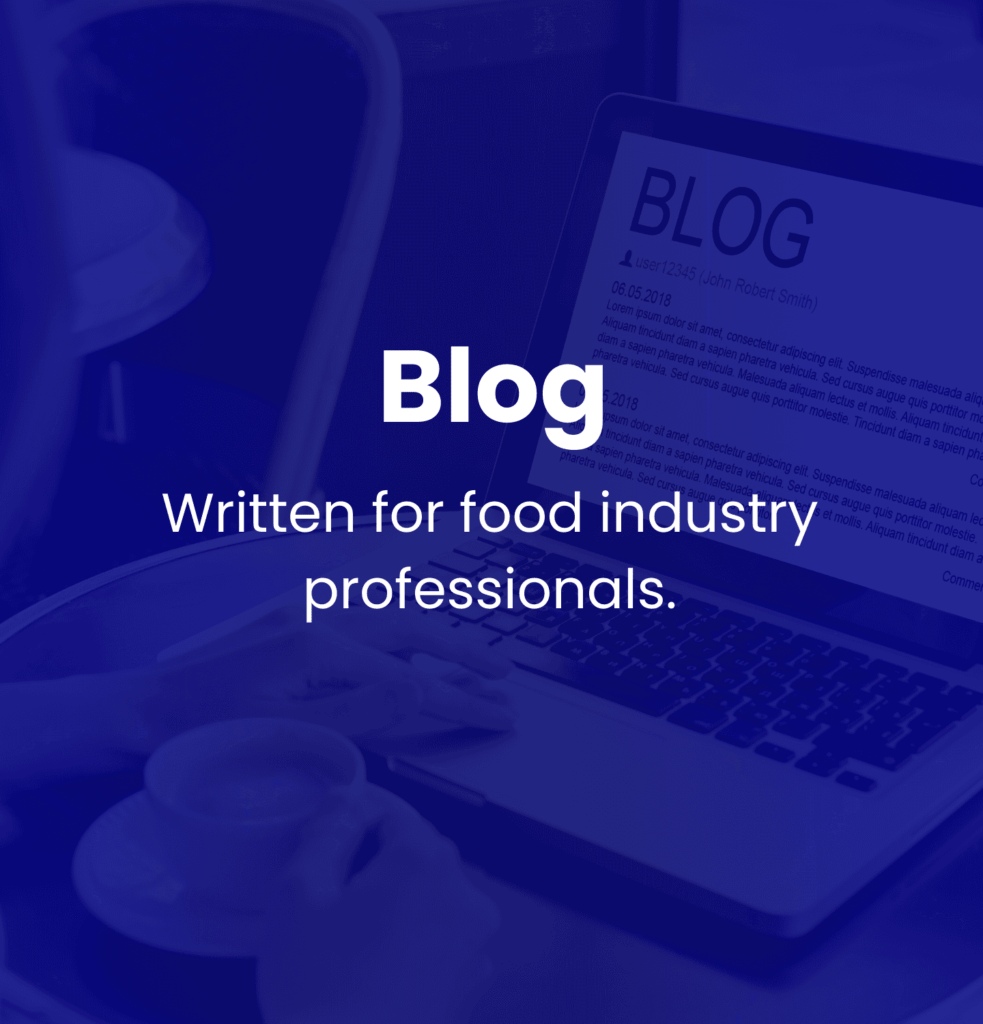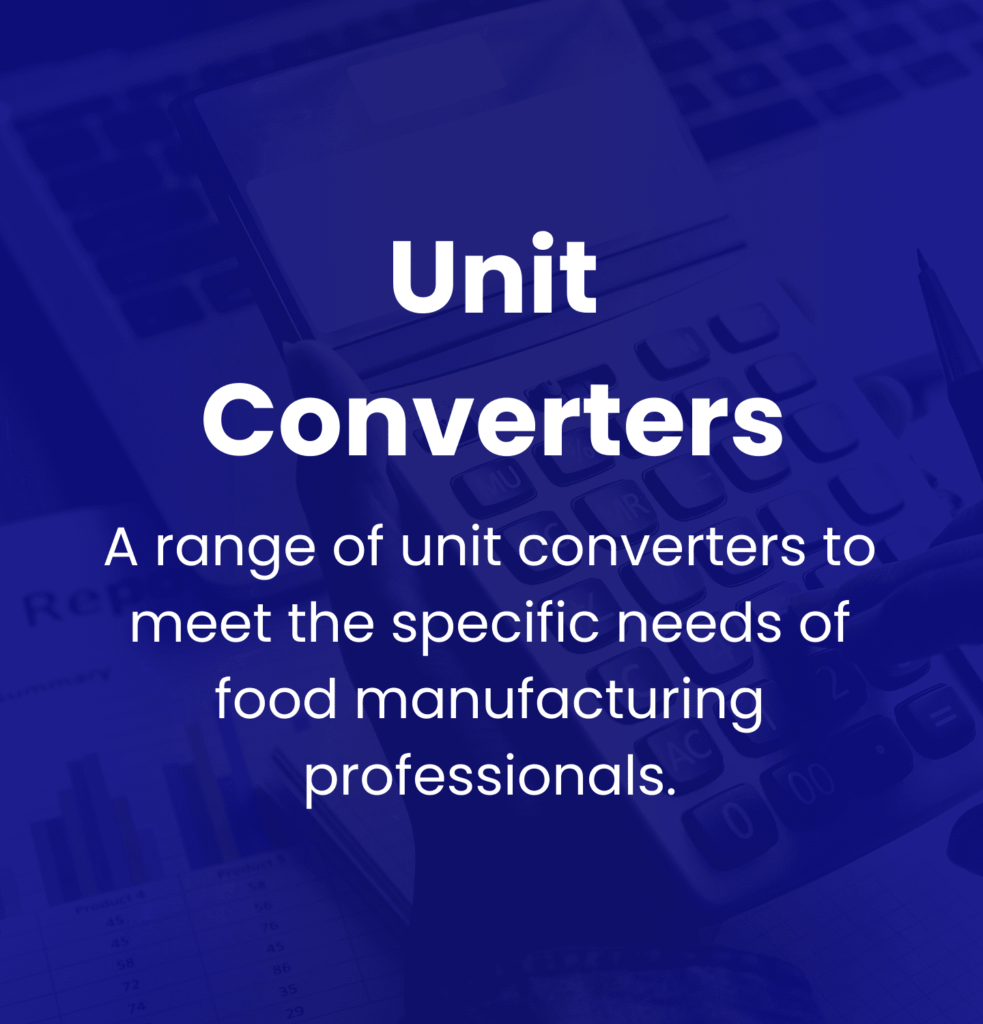Introduction
This post is intended to provide a framework that you can use to assess and improve your food safety and quality culture. We’ll explore how to align values and encourage their adoption. We’ll also discuss ways to address conflicts for mutual benefit. All of this will lead to a methodology for implementing your food safety and quality culture development plan.
Table of Contents
○ Carry Out a Values Analysis
○ Identify Factors That Are Likely to Influence the Attitudes of Individuals and/or The Collective Workforce
○ Define The Expected Behaviours That Would Be Expressive of a Culture of Food Safety and Quality
○ Make Observations About the Behaviours Expressed by Individuals and Groups to Build a Profile of Your Food Safety and Quality Culture
○ Brainstorm Interventions That Could Positively Influence Values, Attitudes and Behaviours Toward the Business’ Ideals
○ Implement Management Interventions for Culture Improvement
○ Allow Time and Consistent Application to Exert Effect
○ Make Observations About Attitudes and Behaviours, Relative to Those Seen Before the Management Interventions
○ FAQ
○ In Summary
Carry Out a Values Analysis
Food safety and quality culture is a sub-set of the organisation’s total culture. Sub-cultures will exist within different functional or social groups throughout the organisation – so for example the values of the senior management may be different to the values held by members of the purchasing department or the HACCP team. Each of these groups may have values that apply specifically to food safety and quality, and values that apply to unrelated ideals such as efficiency, personal security, or convenience.
The ideal way to align values throughout an organisation would be to engage a range of stakeholders representative of the sub-cultures that exist – particularly where those subcultures are highly significant to operations (all authority tiers across all aspects of the process carried out by the business) or management decision-making.
The engagement should capture the values held by each stakeholder group, and should identify values that could influence attitudes and behaviours applicable to food safety and quality alongside values that are not obviously related to quality or safety.
In each case, stakeholders should list their values/ideals in order of priority – so if a compromise was necessary, there’s clarity over which values would be protected over others.
This can be a very simple exercise, simply listing values and then deciding how important those values are relative to each other.
To illustrate, the managing director or chief executive officer for a food manufacturing business might respond:
○ Quarterly financial targets and actual performance.
○ Shareholder and board satisfaction.
○ Market positioning and growth opportunities.
○ Harmonious coordination between departments and functions.
○ Brand reputation (food safety and quality relevance).
○ Personal accomplishment and impact.
A member of the quality department might respond:
○ Consumer safety (food safety and quality relevance).
○ Product quality (food safety and quality relevance).
○ Career progression.
○ Process assurance (food safety and quality relevance).
○ Satisfaction rooted in accuracy and ‘getting things right’.
A member of the sales department might respond:
○ Revenue.
○ Self-perception as a winner/closer.
○ Personal income.
○ Reputation (food safety and quality relevance).
When each stakeholder group is clear about their values and priorities, the total group should evaluate whether there is consistency of values expressed across the different sub-cultures (stakeholder groups) or whether there may be conflict between different part of the organisation.
If different departments, teams, or social groups hold conflicting values – or if the order of priority assigned is inconsistent – then it’s likely to result in disfunction in the way the business operates. It’s bad enough when the left hand doesn’t know what the right hand is doing – so disharmony in organisational values can really inhibit operational efficiency.
Aligning values has to be achieved by agreement. If there are conflicting values held by different stakeholders, this can be resolved by…
○ Discussing the reasons for the level of priority each stakeholder group ascribes to values/ideals,
○ Referencing the organisation’s stated ideals (as expressed in the documented management system as policies including the policy for food safety, legality, authenticity, and quality),
○ Negotiating a system of priorities agreeable to all stakeholders,
○ Re-examining the listed values/ideals (and their relative priorities) held by each stakeholder group to reflect the agreed outcomes.
The best outcome would be for all stakeholder groups that aggregate into the organisation’s culture to understand each other’s values and priorities, understand how food safety and quality ideals fit into that system of values, and act in ways that are most protective of the organisation’s interests.
This same exercise would serve to identify values and motivators particular to different stakeholder groups that make up sub-cultures, which would facilitate a system of rewards to motivate buy-in.
This concept is widely adopted by almost every business, but only narrowly applied. Salespeople are routinely rewarded with commission, which is very rational because the system of rewards is tied to the values held by that stakeholder group.
Different stakeholder groups will almost certainly hold different values, which can be identified and catered to using different organisational approaches.
Some people might value variety in the type of work they do – which could be catered to with a task list composed of planned projects or scheduled activities, selected so that tasks that require slightly different skills or where the nature of the work is substantially different could be drawn from and given to these individuals as a part of their role.
Some people might value career progression – which could be catered to by designing a career progression path intended to educate employees with the skills and abilities that their employer would want them to have in order to move into the role they aspire to progress to, and allocating resources into achieving agreed goals.
Systematically, this can be optimised in creative ways – so for example, there are technical graduate recruitment programs that employ university graduates into an accelerator scheme that exposes them to different environments and concepts in readiness for a substantial career step. A very similar approach could be taken, with organisations engaging with career-oriented employees to align skills development in line with the combined goals of the business and the individual – but extended indefinitely.
A business is made up of values, systems, and processes. Some values influence actions and decisions that impact food safety and quality, while others are representative of other aspects of the organisation’s total culture. Not everyone in a culture holds the same values, so aligning values across the organisation depends on identifying the values of each stakeholder group, and ensuring that those values are prioritised across organisational systems in a way that’s compatible with the stated ideals of the business.
The best approach for this would be consultative. Values are honestly held, so there’s not much utility in telling someone what their values should be. If there is disagreement or conflict over values, you can only overcome that through persuasion.
Authoritarian management will not result in anybody embracing values that they do not earnestly hold or are in disagreement with. You can negotiate, but you can’t enforce.
Identify Factors That Are Likely to Influence the Attitudes of Individuals and/or The Collective Workforce
Look at every business system and interaction that internal stakeholders are exposed to. You can look at the total interactions between the business and its employees, segment to a particular sub-culture represented by different stakeholder groups, or (ideally) look repeatedly at the relationship between people included in the internal culture and the organisation as well as in relation to their sub-culture across different stages of their lifecycle as a member of the organisation’s internal culture.
Businesses place a lot of importance on the brand perception customers have of them. How do we want customers to feel about our business? How is that reflected in the ways the business intentionally creates a customer experience?
Look at the entire experience of being an internal stakeholder.
○ As you arrive on site each day, how does the sight of the building make you feel?
○ Throughout the day, are you invested and engaged?
○ Are your interests and values being served?
○ Are your personal priorities and concerns well aligned with those of the organisation and the work you’re doing?
○ Do you believe you’re contributing to something meaningful?
○ If the organisation holds values that you aren’t already invested in, how receptive are you to embracing those values? Is your relationship with the organisation reciprocal and mutually beneficial?
○ Do you feel loyal and committed to the cultural values of the business?
This isn’t just an experiential construct – you can look at every interaction (such as clocking-in, filling in a record sheet, or interacting with a supervisor) and consider the ways that interaction could be modified to support engagement with the values the company would like to promote. For example, a process record sheet used to record measured quality attributes in production could be modified to include messaging encouraging operatives to notify their supervisor in the event of quality deviation, as well as an explanation for why quality is so important to the business – which would promote situation-specific actions aligned with the company’s intention to uphold its commitment to product quality and safety, as well as offering the reader a persuasive reason to buy-in and engage.
The objective is to understand the values held by different stakeholder groups, and how those stakeholders are interacted with by the business at each stage in their lifecycle from applicant to retiree. Where individuals’ interests can be systematically aligned with business processes, intentionally redesign the systems to create positive reinforcement and added value. Where the business needs individuals to embrace values that don’t directly serve their personal needs, a relationship of reciprocity and loyalty can be promoted by acknowledging and serving the needs of the different stakeholder groups in a way that best fits the values and priorities they hold.
The situation you’re trying to create would be for all stakeholders to understand their own values, the values held by other stakeholders, and the interests of the business – and voluntarily act in ways supportive of those values. To do that, you need to persuade the people that make up your internal culture to embrace and invest in the values being served. Persuading people to serve someone else’s interests is difficult, so you’ve got a much better chance of success if you can engineer a situation where the values and objectives of individuals and groups is served when they embrace the values and ideals of the business.
Be as targeted and practically oriented as possible. ‘Easy’ and ‘convenient’ are ideals sought by certain people under certain circumstances. ‘Challenging’ and ‘stimulating’ are ideals sought by different people under other circumstances. Interventions and modifications should be targeted and appropriate.
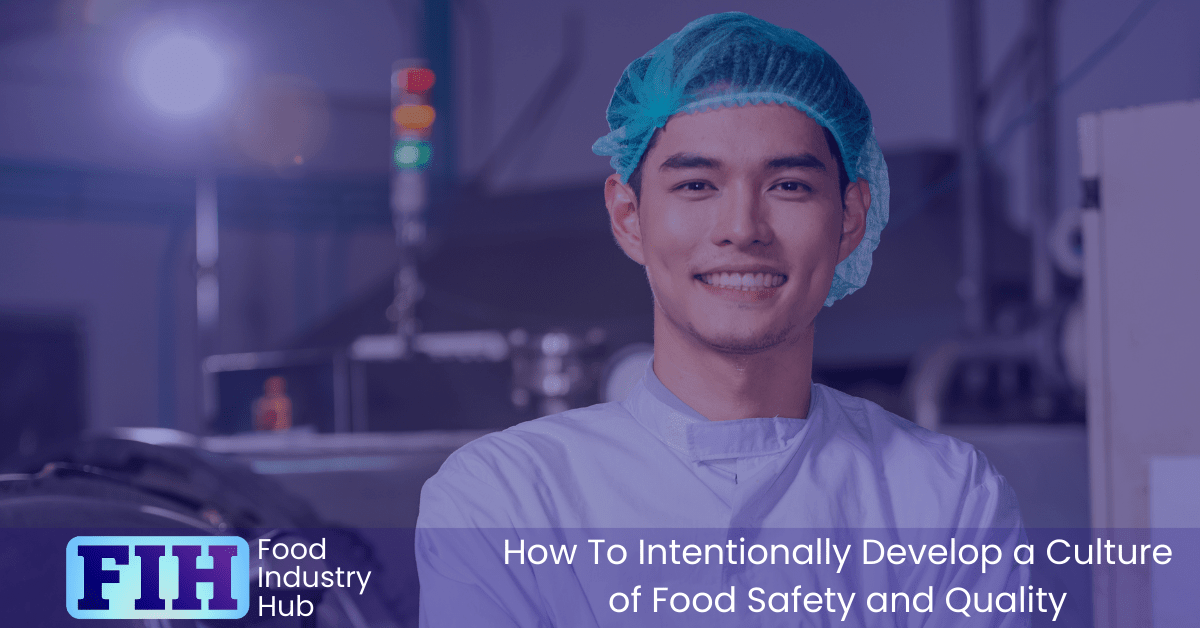
Sign-up for the Food Industry Hub Mail Service
We regularly produce new content for food industry professionals, and the Food Industry Hub Mail Service is the best way to stay up to date with the latest additions.
Signup today to be added to the Food Industry Hub mailing list.
Define The Expected Behaviours That Would Be Expressive of a Culture of Food Safety and Quality
If an organisation had really well integrated food safety and quality values upheld across all stakeholder groups, what would that looks like? Behaviourally, how might one distinguish between actions and decisions representative of a culture of food safety and quality, and the alternative?
Many people look at compliance with assurance schemes as being indicative of a mature food safety and quality culture. This isn’t a valid outlook for logical reasons, among other things. Quality assurance standards have specific requirements for culture, which do not include ‘certified to an assurance scheme’ as a qualifier. The suggestion that obtaining a certificate of compliance with a quality assurance scheme is indicative of a strong culture is in conflict with the fact that food safety and quality culture criteria have been added into compliance schemes – and even after specific requirements having been introduced, a certificate would only indicate whether a site could produce objective evidence of a culture development plan for an auditor – which is a very indirect and unreliable indicator of culture.
The argument that certification is demonstrative of culture is appealing because there is a clear measure of success – but in reality, certification can be realistically achieved by food manufacturing businesses with a very strong quality culture and by businesses who are able to provide evidence of a food safety and quality culture development plan to an auditor. Some certified sites will have really aspirational, industry-leading cultures oriented around food safety and quality ideals, but certification by itself wouldn’t indicate one way or the other.
So, what sort of outward indicators can be used to indicate behaviourally the attitudes and values – the profile of your food safety and quality culture – at play?
To answer this, look at your organisational behaviour from the perspective of the total of departments and individuals within the business, and for each group of stakeholders. In each case, list activities, responsibilities, and behaviours carried out by that stakeholder group – identifying direct and indirect impacts on food safety and quality. For example:
Planning department:
○ Scheduling production to meet sales demand.
○ Scheduling only trained operatives to specific positions.
○ Scheduling non-allergenic products ahead of allergen-containing products.
○ Scheduling down dime for preventative maintenance.
○ Scheduling down dime for hygiene operations.
The planning department may not be the first business function that comes to mind as a food safety and quality culture indicator, but there are numerous behavioural expressions of that function that can be used to indicate whether or not management decisions adhere to food safety and quality values.
○ Are operational processes working effectively for customer satisfaction? Are orders being met?
○ Have there been any instances of untrained operatives being assigned to positions they have been adequately prepared for? Is that something the organisation is willing to do?
○ If an adjustment came in on a lucrative customer contract, but a production batch of allergenic product would need to be re-scheduled to the front of the week to accommodate the requirement, does the planning department make the adjustment or refuse on consumer safety grounds?
○ If your business is subject to seasonal demand, and there’s a strong commercial incentive to operate the line beyond its service recommendations several months through the year, do you schedule continuous production or incur opportunity cost by prioritising the maintenance schedule because it’s a prerequisite of the HACCP system?
○ If there were a sustained period of consistently high demand, would the amount of time allocated to hygiene processes change proportionally to the amount of time allocated to production? To what extent would downtime associated with assurance processes be ringfenced?
You can look at every internal stakeholder group and consider the demand and expectations placed on that stakeholder profile (whether an activity is undertaken by a single individual or a group) in order for the business’ food safety and quality ideals to be served – and list observable/measurable indicators for attitudes and values implied by a qualitive assessment of the way the behaviour is manifested.
While compliance with the requirements of quality assurance schemes doesn’t directly indicate food safety and quality culture maturity, they can provide a welcome roadmap for identifying behavioural indicators for your internal culture. So for example, evidence of a system for internal audits would not be an indicator for culture or values, but the nature of the engagement with the internal auditing system could be used to infer attitudes and values.
Internal audits are carried out, but are they consistently carried out according to the original schedule (are they prioritised alongside other time demands)? Do audit records serve to identify systems improvement opportunities? Of all improvement initiatives undertaken, what percentage of those initiatives originated from internal audits? Do the outcomes of engagement with the internal auditing system imply an attitude of continuous improvement and commitment to verification processes, or are they more indicative of disengaged internal auditors looking to clear the internal audit from their task list?
Consider how activities are undertaken by different departments, teams, and working groups. If those activities were carried out by people committed to food safety and quality ideals, how would the nature of the behaviour compare to behaviours not strongly motivated by those concerns?
Make Observations About the Behaviours Expressed by Individuals and Groups to Build a Profile of Your Food Safety and Quality Culture
If you’re watching people faced with a decision to act in favour of their own convenience or food safety and quality assurance processes, what are you learning about the attitudes and values that are motivating their behaviours?
If an operative walks straight past the handwash station to get to the clocking-in machine on the factory floor, what can you infer about the competing priorities that manifest in ‘getting to the clocking-in machine’ being placed above ‘washing hands’ as the priority that was acted upon?
Actions that conflict with a value/ideal under specific circumstances may not indicate the complete rejection of a value – each observation of behaviour indicates an attitude/stance adopted by a person or group presented with a particular set of circumstances – so it’s useful to look out for patterns of behaviour, or combinations of behaviours that can be taken together to indicate the values being acted on.
Inferring attitudes and values from behavioural observations allows you to build a descriptive profile of your food safety and quality culture – with values and attitudes for each stakeholder group implied by behavioural observations.
○ For this group, we see these behaviours, which imply attitudes/stances protective of these values.
○ Behaviours are consistent with the company’s food safety and quality ideals in these ways…
○ Behaviours are oppositional to the company’s food safety and quality ideals in these ways…
○ Consistency of behaviour indicates shared values across the following teams…
○ Contradictory or inconsistent behaviours represent disharmony in the following areas…
For behaviours that you would like to promote, it may be most effective to reward the fact that the value being served was championed by the behaviour rather than rewarding the specific nature of the behaviour. This is more likely to reinforce concepts and ideals.
For behaviours you would like to change or discourage, understanding the motivations behind the actions will be key to influencing change.
Note, you can supplement behavioural observations with questionnaire responses – but be aware of the limitations. Questionnaires give you an insight into the responses that individuals self-report when prompted. It’s possible that questionnaire responses are an accurate reflection of the honest disposition of the respondent, but they might not be. It’s possible that an individual respondent will be representative of the overall culture, but they might not be. It would be prudent to evaluate consistency between attitudes expressed on questionnaires and those implied by behavioural observations.

Brainstorm Interventions That Could Positively Influence Values, Attitudes and Behaviours Toward the Business’ Ideals
In making behavioural observations, you probably made a note of some behaviours that aren’t properly in alignment with the company’s food safety and quality ideals.
Systematically, you could describe each instance of this as incongruence between the company’s food safety and quality values/ideals and the values/ideals that are being manifested as behaviour at whatever operational step the undesirable behaviour was observed at.
The motivation shaping current behaviour is significant because whatever it is, it represents a priority for the person carrying out the activity and it will continue to influence future behaviours if unacknowledged.
You can correct for this most effectively by following this sequential process:
Mutually aligned values
The actions and behaviours carried out by people are shaped by their values and disposition.
Some individuals are perfectly good employees, but are disposed to place their own personal needs above the ideals of the company most of the time. However positively disposed to food safety and quality values they may be, if a specific set of circumstances present a conflict between their personal interests and those of the business, they’ll default to their selfish interests unless it’s really exceptional. Systematically, it’s more reliable and scalable to try to design-out conflicts like this (moving the clocking-in machine to before the handwash sink removes the conflict of interests, for example) than it would be to try to force behavioural changes for each occurrence.
If competing values cannot simply be designed-out, it’s best to look for ways to serve the needs of both the individual and the organisation – satisfying the interests of both by introducing a behavioural change that the individual or group carrying out the activity can commit to, while preserving the interests held by stakeholders and the organisation. Crucially, the person or group whose behaviour is being modified must be a beneficiary of the change. The new way must be more appealing than the old way, or the change would not resolve the incongruence of values.
Messaging, communication and repetition
It seems too simplistic to be true, but people can be persuaded of something just be exposing them to messaging over and over. The more you see something, the more you believe it.
Try to list out every possible way messaging could be presented to a production operative. Presented as signs, work instructions, messaging displayed on reference sheets, TVs or digital display screens, written letters, etc. How long can you make that list before you’ve exhausted every method for messaging and engagement?
Sometimes, you want to display a broad message to your entire workforce – for example, communicating your food safety and quality values. Sometimes, you want to deliver a very targeted message to an individual at the point of use. You can draw from your list of communication methods to decide the best way to present messaging at each point.
Feedback and rewards
Try to identify the values/priorities most motivational to the stakeholder group whose attitudes/behaviours are in misalignment with the company’s ideals, and set up a rewards and enforcement system that makes it so that the needs and aspirations of that group are served when the behaviour is modified.
It could be training and career progression opportunities. It could be money. It could be a sense of accomplishment, and the chance to do things they didn’t think they could do. It could be status. In any case, a feedback and rewards system that intentionally serves the values held by the stakeholder group can serve to realign values, even in cases where the activity performed only directly benefits the business. If the rewards system can proportionately serve the values of the person or group being appealed to, it can mitigate for the direct misalignment of priorities and interests by compensating compliant stakeholders.
Implement Management Interventions for Culture Improvement
Articulate specific, measurable, achievable, relevant, timebound interventions, with responsibilities assigned for implementation of each.
Determine changes that need to be made to systems and processes, and how the changes can best promote the cultural ideals of the business and its component stakeholder groups.
For messaging, give strategic consideration to the way values are expressed, how messages are presented, and how to use persuasion to encourage buy-in.

Allow Time and Consistent Application to Exert Effect
Values and ideals are slow to establish, and once they’re in place they can be difficult to influence. Cultural systems, and not just people, can be resistant to change – so instigating developments for the food safety and quality culture will not yield immediate results.
Undoing the effect of historic influences and introducing new changes both take considerable time and consistency.
Think long-term, and continually nurture the culture to align with the company’s food safety and quality ideals.
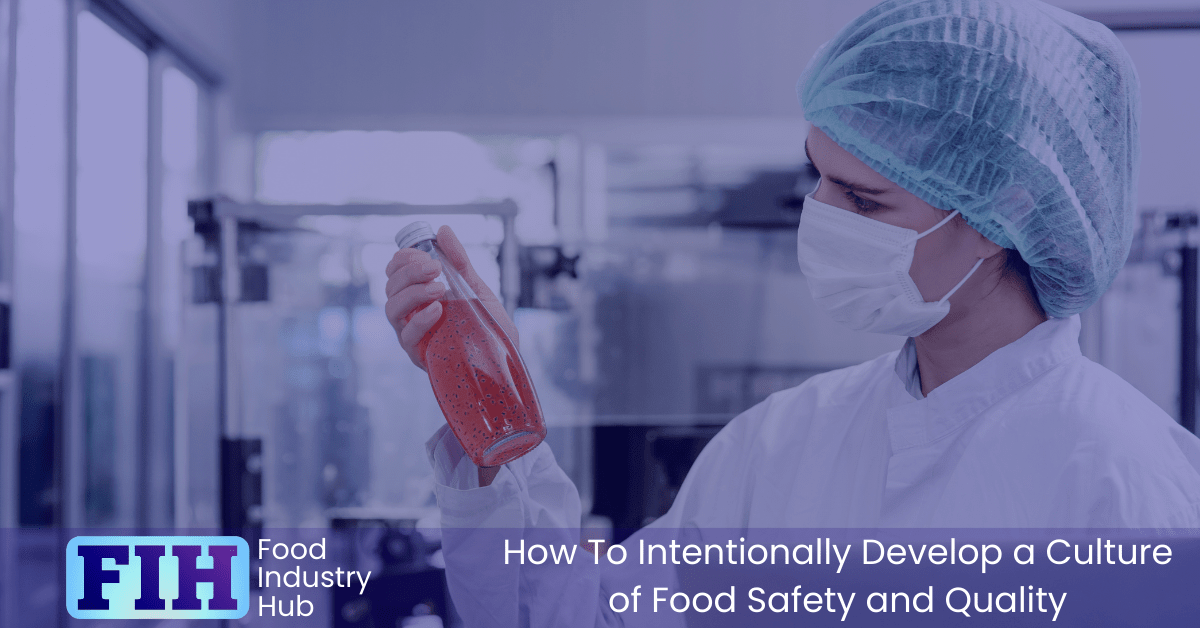
Make Observations About Attitudes and Behaviours, Relative to Those Seen Before the Management Interventions
The same process used to identify areas for change and improvement can be used to evaluate progress.
Think about how the behaviours indicate attitudes and values.
Compare behaviours to those seen before the interventions.
Do changes in behaviour adequately align with the food safety and quality ideals they are intended to serve?
FAQ
What can happen if an organisation has conflicting values?
When an organisation has conflicting values, it can lead to a range of negative consequences that affect the overall performance, culture, and success of the business. Conflicting values create confusion, erode trust, and hinder the organisation’s ability to make decisions and pursue its objectives cohesively. Here are some potential outcomes of conflicting values within an organisation:
Confusion and Uncertainty: Conflicting values can create ambiguity and uncertainty about the organisation’s direction and priorities. Employees may be unsure about which values to prioritise, leading to inconsistency in decision-making and actions.
Ineffective Decision-Making: When values are in conflict, decision-making processes become more complicated. Disagreements and debates over values can hinder timely and effective decision-making, potentially leading to stagnation or paralysis.
Lack of Alignment: Conflicting values can result in different departments or teams pursuing divergent goals and strategies. This lack of alignment can lead to internal conflicts, reduced collaboration, and inefficiencies.
Decreased Employee Engagement: Employees may become disengaged and demotivated when they perceive that the organisation’s values are unclear or contradictory. This can lead to decreased morale, productivity, and job satisfaction.
Erosion of Trust: Conflicting values can erode trust among employees, as well as between employees and leadership. Trust is essential for effective communication, collaboration, and a positive work environment.
Inconsistent Culture: Organisational culture is shaped by its values. Conflicting values can lead to an inconsistent or fragmented culture, where different groups within the organisation exhibit different behaviours and norms.
Customer Perception: Conflicting values can affect how customers perceive the organisation. Inconsistencies in the values communicated to the public can lead to confusion and distrust among customers, potentially impacting brand loyalty.
Resistance to Change: Introducing changes or initiatives that align with one set of values but conflict with another can face resistance from employees who are attached to the conflicting values.
High Turnover: Employees who feel disconnected from the organisation’s values or who experience frustration due to value conflicts may be more likely to leave the organisation.
Missed Opportunities: Conflicting values can lead to missed opportunities for growth and innovation. Employees may be hesitant to propose new ideas or take risks if they perceive that their values are not aligned with those of the organisation.
To address conflicting values, organisations need to engage in a process of value clarification, communication, and alignment. This may involve:
Open Dialogue: Encourage open conversations about values and actively seek input from employees at all levels.
Value Assessment: Assess the existing values and determine which ones are most important for the organisation’s long-term success.
Clear Communication: Clearly communicate the organisation’s core values, ensuring that employees understand how these values guide decision-making and behaviour.
Leadership Role Modelling: Leaders should embody the organisation’s values and consistently model them in their actions and decisions.
Consistent Reinforcement: Continuously reinforce the importance of aligned values through training, recognition, and integration into performance evaluations.
By addressing conflicting values and promoting a unified value system, organisations can create a more cohesive and purpose-driven environment that supports their goals and mission.
How important is it for people to feel invested in food safety and quality?
Creating a strong food safety and quality culture requires individuals to feel deeply invested in these ideals. Without this investment, efforts to improve the food safety and quality culture are likely to face significant challenges and may not yield sustainable results. Here’s why it’s crucial for people to feel invested when working to enhance the food safety and quality culture:
Behavioural Change: To cultivate a culture of food safety and quality, it’s essential to influence how people think and behave. When individuals are genuinely invested in these values, they are more likely to adopt the desired behaviours consistently.
Sustainability: Sustainable change comes from within. When people feel personally connected to the importance of food safety and quality, they are more likely to sustain their commitment over time, even when facing challenges or competing priorities.
Ownership and Accountability: An invested workforce takes ownership of their roles and responsibilities in upholding food safety and quality standards. This leads to a higher level of accountability throughout the organisation.
Innovation and Creativity: When individuals are invested in food safety and quality, they are more likely to actively seek out innovative solutions and suggest improvements that enhance safety measures and quality control processes.
Empowerment: Feeling invested empowers individuals to take proactive steps to address issues, report concerns, and contribute to overall improvement efforts. This empowerment is a key driver of a strong food safety and quality culture.
Positive Peer Influence: An invested workforce encourages positive peer influence. Employees who believe in the importance of food safety and quality can inspire and motivate their colleagues to do the same.
Collaboration: An invested workforce is more likely to collaborate and work together to identify challenges, implement solutions, and continuously improve processes. Collaboration is essential for building a cohesive food safety and quality culture.
Adaptability: As the food industry evolves, new challenges and technologies emerge. An invested workforce is more adaptable and willing to embrace change, helping the organisation stay ahead of emerging trends and issues.
Leadership Support: When employees are invested in food safety and quality, they provide strong support for leadership initiatives aimed at improving culture. Their active involvement and buy-in make it easier for leaders to drive positive change.
Crisis Management: During crises or incidents, individuals who are invested in food safety and quality are more likely to respond effectively and efficiently, minimising potential harm and damage to the organisation’s reputation.
Continuous Improvement: An invested workforce is more likely to engage in continuous improvement efforts, seeking ways to refine processes, enhance controls, and prevent issues from recurring.
To foster a culture of food safety and quality, organisations should focus on promoting understanding, communication, education, and empowerment. Engage employees in discussions about the importance of their roles in ensuring food safety and quality, provide training to enhance their knowledge, and create an environment where their contributions are valued and recognised. This approach will encourage employees to feel invested and take ownership of food safety and quality values, ultimately leading to a stronger and more effective culture.
In Summary
A mature of food safety and quality fully integrates the needs and interests of internal stakeholder groups with the values and ideals of the business. It is a mutually beneficial state, protective of the needs of all parties.
Values and ideals can be defined, but not measured. The system of priorities that values are subject to can be inferred by behavioural expressions.
Systematic and social pressures exert influence over internal culture, so identifying interactions and structurally aligning stakeholder interests with business processes presents systemic opportunities to perpetuate intentional development.
From The Food Industry Hub Knowledge Centre
Featured pages from The Food Industry Hub Knowledge Centre:
Further Resources
Food Industry Hub serves the food industry with a range of digital resources for the benefit of both commercial food manufacturers and food industry professionals.
For food manufacturers, we offer integrated management systems that give every user a direct interface with your QMS.
For food industry professionals, we provide an extensive signposting service in addition to informational content we hope you’ll find useful as you face new professional challenges. We have very ambitious plans to expand the range of services offered, and currently present informational content on management, safety and quality, and professional success.

